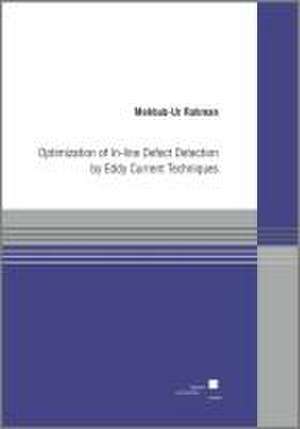Rahman, M: Optimization of In-line Defect Detection by Eddy
en Paperback – 2 aug 2011
Preț: 144.88 lei
Nou
Puncte Express: 217
Preț estimativ în valută:
27.75€ • 28.59$ • 23.24£
27.75€ • 28.59$ • 23.24£
Carte indisponibilă temporar
Doresc să fiu notificat când acest titlu va fi disponibil:
Se trimite...
Preluare comenzi: 021 569.72.76
Specificații
ISBN-13: 9783862191680
ISBN-10: 3862191680
Dimensiuni: 149 x 211 x 10 mm
Greutate: 0.18 kg
Editura: Kassel University Press
ISBN-10: 3862191680
Dimensiuni: 149 x 211 x 10 mm
Greutate: 0.18 kg
Editura: Kassel University Press
